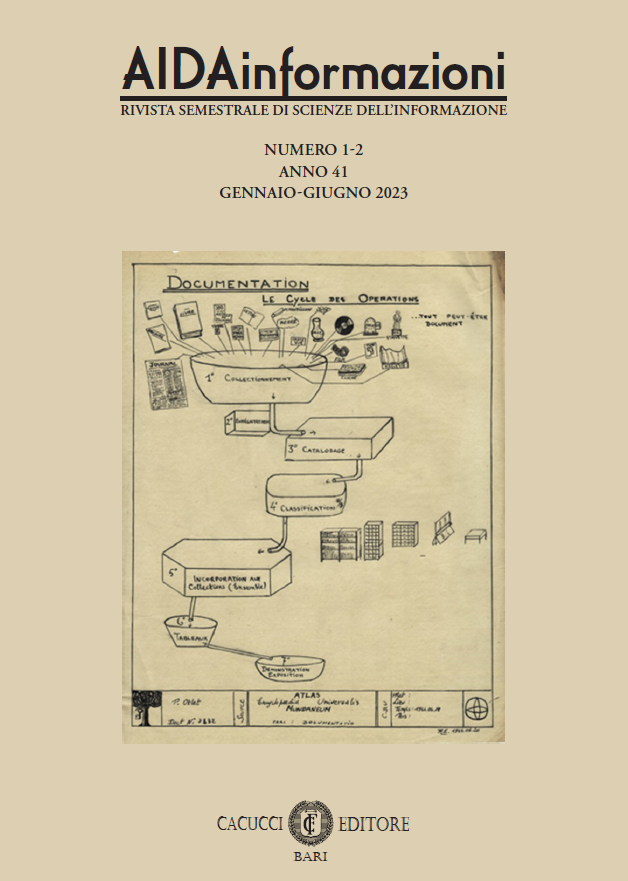Intelligenza artificiale e informazione giuridica: una sperimentazione con GPT-3 per il testo coordinato delle norme
Parole chiave:
Computational Linguistics, Artificial Intelligence, Legal informatics, Dissemination of legal information, Current legislative textsAbstract
The purpose of this paper is to provide a brief overview of the GPT-3 linguistic model, and to explore the potential of using artificial intelligence to reconstruct the current legislative text. The paper presents a detailed description of the use case that was designed, the system outputs, and the evaluations conducted.
Riferimenti bibliografici
Aydin, Murat, and Hakan Yaman. 2020. “Domain knowledge representation languages and methods for building regulations.” In Advances in Building Information Modeling: First Eurasian BIM Forum, EBF 2019, Istanbul, Turkey, May 31, 2019, Revised Selected Papers, edited by Salih Ofluoglu, Ozan Onder Ozener, and Umit Isikdag, 101-21. Berlin: Springer.
Bach, Ngo Xuan, Nguyen Thi Thanh Thuy, Dang Bao Chien, Trieu Khuong Duy, To Minh Hien, and Tu Minh Phuong. 2019. “Reference extraction from Vietnamese legal documents.” In Proceedings of the 10th International Symposium on Information and Communication Technology, 486-93. New York: Association for Computing Machinery.
Biagioli, Carlo. 2009. Modelli funzionali delle leggi. Verso testi legislativi autoesplicativi. Firenze: European Press Academic Publishing.
Bolioli, Andrea, Luca Dini, Pietro Mercatali, and Francesco Romano. 2002. “For the automated mark-up of Italian legislative texts in XML.” In Legal Knowledge and Information Systems. Jurix 2002, edited by Trevor J.M. Bench-Capon, Aspassia Daskalopulu, and Radboud Winkels. 21-30. Amsterdam: IOS Press.
Brown, Tom B., Benjamin Mann, Nick Ryder, Melanie Subbiah, Jared D. Kaplan, Prafulla Dhariwal, Arvind Neelakantan, Pranav Shyam, Girish Sastry, Amanda Askell, et al. 2020. “Language models are few-shot learners.” Advances in neural information processing systems 33: 1877-1901.
Cherubini, Manola, Francesco Romano, Andrea Bolioli, Nazareno De Francesco, e Irene Benedetto. 2023. “La summarization di testi giuridici: una sperimentazione con GPT-3.” Rivista italiana di informatica e diritto 9 (1): 1–14.
Cherubini, Manola, e Francesco Romano. 2022. “Legiferare con l’Intelligenza Artificiale.” Journal of Ethics and Legal Technologies 4 (1): 41-64. https://doi.org/10.14658/pupj-JELT-2022-1-4.
Corasaniti, Giuseppe. 2022. Data science e diritto. Certezze digitali e benefici del dubbio. Torino: Giappichelli.
Devlin, Jacob, Ming-Wei Chang, Kenton Lee, and Kristina Toutanova. 2018. “Bert: Pre-training of deep bidirectional transformers for language understanding.” arXiv preprint arXiv:1810.04805.
Fioravanti, Chiara, e Mariasole Rinaldi. 2010. “Il sistema informativo PAeSI: un accesso telematico unico a informazioni, norme e procedimenti in materia di immigrazione.” Informatica e diritto 1 (2): 93-131.
Francesconi, Enrico. 2012. “Parser e Editor xmLeges.” In Linee guida per la marcatura dei documenti normativi secondo gli standard, a cura di Maria Pia Giovannini, Monica Palmirani, e Enrico Francesconi. Firenze: European Press Academic Publishing.
Garcia-Constantino, Matias, Katie Atkinson, Danushka Bollegala, Karl Chapman, Frans Coenen, Claire Roberts, and Katy Robson. 2017. “CLIEL: context-based information extraction from commercial law documents.” In Proceedings of the 16th edition of the International Conference on Artificial Intelligence and Law, 79-87. New York: Association for Computing Machinery.
Garofalakis, John, Konstantinos Plessas, and Athanasios Plessas. 2016. “Automatic identification, extraction and application of textual amendments in Greek legislative texts.” In Legal Knowledge and Information Systems, JURIX 2016, edited by Floris Bex, and Serena Villata, 187-90. Amsterdam: IOS Press.
GitHub. n.d. “Languages by word.” Consultato il 10 gennaio 2023. https://github.com/openai/gpt-3/blob/master/dataset_statistics/languages_by_word_count.csv.
Lesmo, Leonardo, Alessandro Mazzei, e Daniele Radicioni. 2008. “Estrazione automatica di informazioni relative alle modificazioni normative.” In I fondamenti cognitivi del diritto, a cura di Raffaele Caterina, 65-87. Bologna: GEDIT Edizioni.
Maat, Emile, and Tom van Engers. 2003. “Mission impossible?: Automated norm analysis of legal texts.” In Legal Knowledge and Information Systems, JURIX 2003, edited by Daniele Bourcier, 143-44. Amsterdam: IOS Press.
Macey-Dare, Rupert. 2023. “ChatGPT & Generative AI Systems as Quasi-Expert Legal Advice Lawyers-Case Study Considering Potential Appeal Against Conviction of Tom Hayes.” https://ssrn.com/abstract=4342686 or http://dx.doi.org/10.2139/ssrn.4342686.
OpenAI. n.d.a. “Examples.” Consultato il 10 gennaio 2023. https://beta.openai.com/examples/.
OpenAI. n.d.b. “API Reference.” Consultato il 10 gennaio 2023. https://platform.openai.com/docs/guides/completion/editing-text.
Radford, Alec, Jeffrey Wu, Rewon Child, David Luan, Dario Amodei, and Ilya Sutskever. 2019. “Language models are unsupervised multitask learners.” OpenAI blog 1 (8).
Sartor, Giovanni, Monica Palmirani, Enrico Francesconi, e Maria Angela Biasiotti, a cura di. 2011. Legislative XML for the Semantic Web. Principles, Models, Standards for Document Management. Berlin: Springer.
Treccani. n.d. “Alinea.” Consultato il 10 gennaio 2023. https://www.treccani.it/vocabolario/alinea.
Vincenzi, Federico. 2019. “Intelligenza artificiale, machine learning, deep learning.” In Tecnologia e diritto. Informatica giuridica, II, a cura di Giovanni Ziccardi, e Pierluigi Perri. Milano: Giuffrè.
##submission.downloads##
Pubblicato
Fascicolo
Sezione
Licenza
Copyright (c) 2023 Cacucci Editore

Questo lavoro è fornito con la licenza Creative Commons Attribuzione - Non commerciale - Condividi allo stesso modo 4.0 Internazionale.



